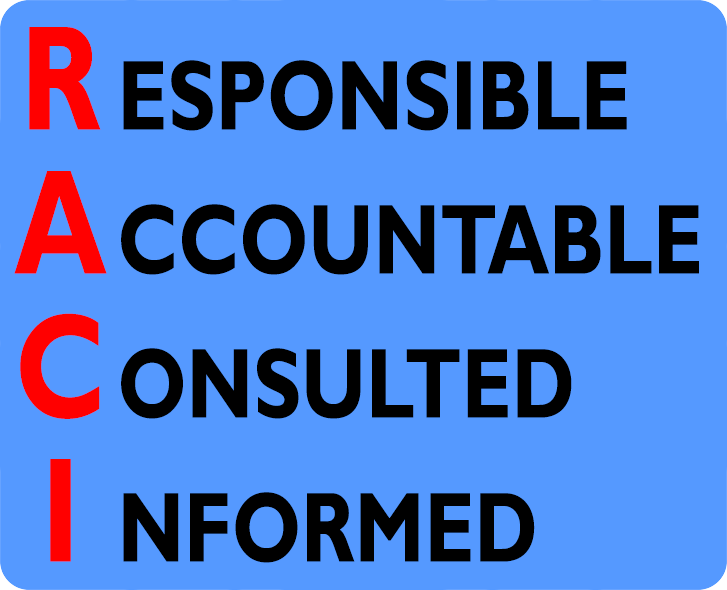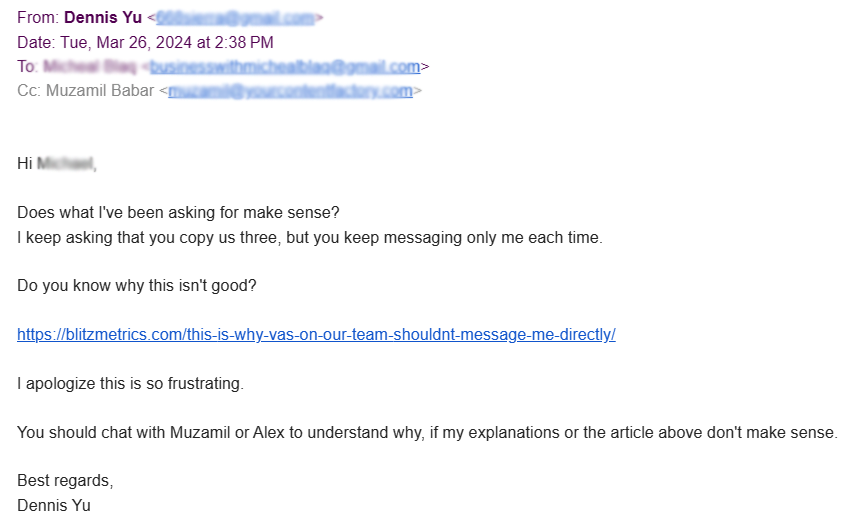It’s not because I don’t want to be disturbed, contrary to what some of our virtual assistants (VAs) may think.
Have you ever received a message that made you wonder why it was sent only to you and not to anyone else? This happens to me all the time with our VAs, consuming 80% of my time, which could have been devoted to more important tasks.

If a VA sends a message only to me and no one else, then I assume the VA thinks I’m the only person capable of answering that question, reviewing that task or addressing that issue. However, this is almost always not the case.
If you work in a team, you should learn how to work effectively as a team member.
In any form of team communication, there is always the person responsible, the person accountable, the person consulted, and the person informed. It’s called #RACI, and it’s in our Level 1 training, which every new team member undergoes.

#RACI means that you can send each message to a maximum of four people, but you don’t always need to send it to all four people. However, there is almost never a reason to send it only to me.

Being the CEO, my team should inform me about what’s going on, so I’m the “I” in #RACI. They should copy me but never message me without including other people. This means they should put my email address in the Cc field.

When they include me in the loop, they should ensure it’s something I need to know. This is because I receive thousands of messages a day. And if VAs could help trim that down by not including me in trivial matters, that would be great.

To be honest, I prefer not to be included in the loop. I should only be copied when something has gone wrong, and I have to come to the rescue. I would love to see a time when I don’t have to do that either, and this will only happen once we have quality people in place.
Who should VAs message directly? They should message the person responsible for taking action or making a decision, and always copy the person who is accountable and the one who needs to be informed.
Dangers of Reply-All:
Just as VAs shouldn’t send messages only to me, they also shouldn’t fall into the trap of using “reply-all” carelessly.
Hitting “reply-all” on every email might seem like a way to keep everyone in the loop, but it actually creates noise, slows down communication, and often confuses who’s supposed to take action. Instead of helping the team move faster, it paralyzes progress with too many cooks in the kitchen—and no one owning the task.
Think of it this way: just like sending a message only to me assumes I’m the only one who can solve it, replying to everyone assumes everyone needs to read it—which is rarely true.
The RACI model gives us a framework for intentional communication. Don’t just hit “reply-all” because it’s easy—take a moment to think who actually needs to do something, who needs to know, and who can be left off the thread entirely. Respecting people’s inboxes is a sign of respect for their time.
It’s so simple, yet many VAs continue to make the same mistakes. My hope is that I will never have to refer them to this post.
